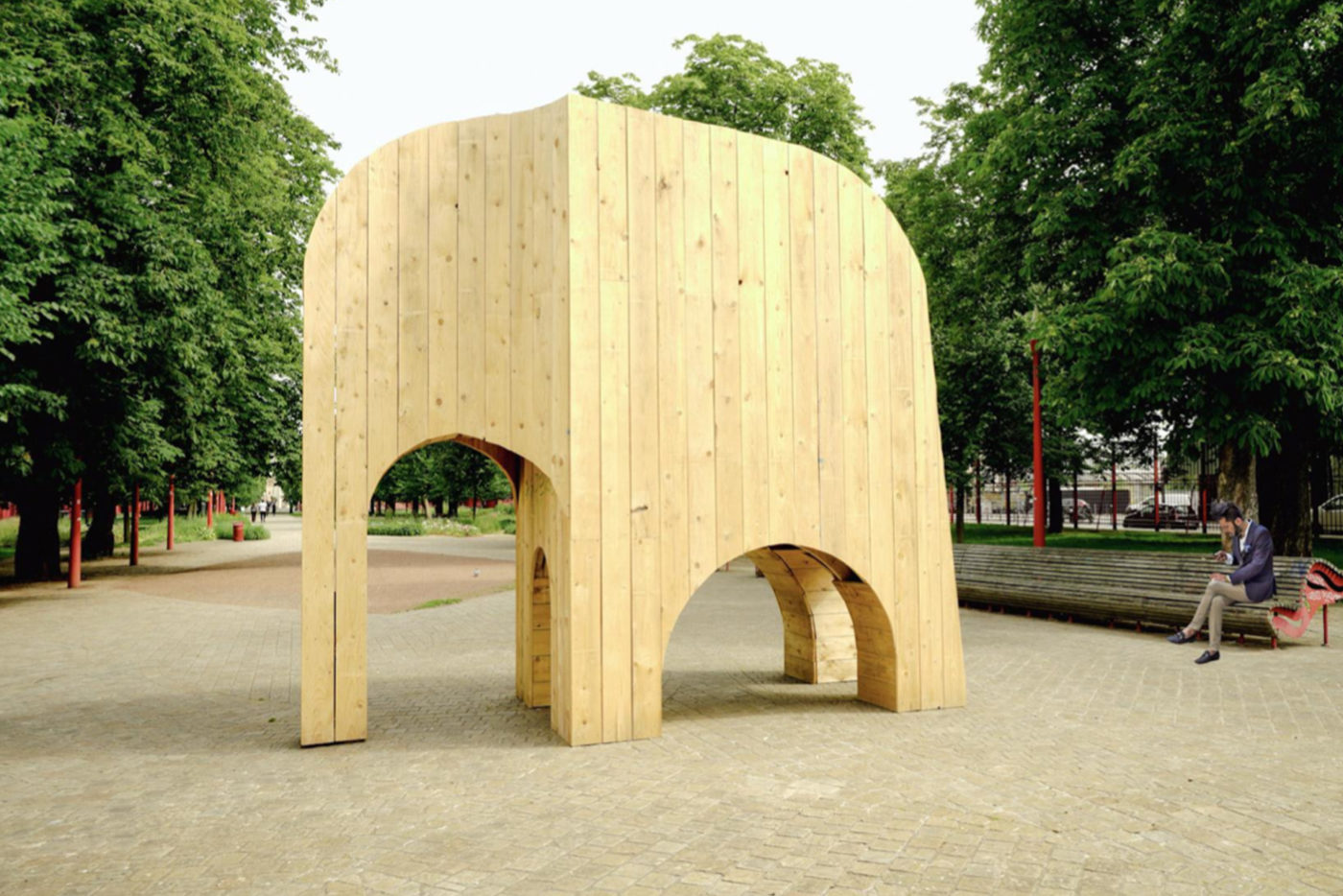
Shangri-La Tulips
Yayoi Kusama
Esplanade François Mitterrand, Lille
This strange 7-meter-high pop-like bouquet is a reference to the marvelous landscapes of the imaginary and utopian land of Shangri-la. Tulips have become one of the symbols of Lille since Lille2004 European Capital of Culture.
With the support of Rabot Dutilleul, KPMG and Tollens

God Hungry
Subodh Gupta
Sainte Marie-Madeleine Church, Lille
The artist Subodh Gupta explores the paradoxes of his native India, a country caught between modernity and archaism. In installations that are often monumental, he takes icons, symbols and codes out of context – the sacred cow, kitchen utensils, the milk delivery scooter and the Ambassador car – emblematic objects that shape individual and collective identities in India.
Emblematic of the daily lives of millions of Indians, crockery – a recurring element in his work – is hijacked and turned into an artistic installation. This object reflects the rise of the middle classes, the homogenisation of lifestyles in India, and commercial exchanges in a globalised world. In GodHungry, Gupta amplifies the gleaming accumulation and pushes it to the extreme.
God, hungry for earth and people, swallows everything in his path and regurgitates this tonne of crockery in a breaking wave, a painful tribute to the memory of the victims of the tsunami of 26 December 2004.
The acquisition of God Hungry by the City of Lille, during the Bombaysers de Lille event in 2006, was made possible by the sponsorship of AG2R, La Mondiale and the La Mondiale Foundation.

Angels-Demons. Parade
AES+F
Esplanade of the Gare Saint Sauveur, Lille
One of the ‘babies’ in the Parade des Anges et Démons, installed from 14 March to 12 July 2009 on the Rambla in Lille, has taken its place on the esplanade of the Gare Saint Sauveur. Created by the Russian artists’ collective AES+F, this curious baby oscillates between angel and demon. Evil can resemble good and vice versa. Perhaps he embodies a new age…
With the support of Galerie Triumph, Volker Diehl Gallery, Rabot Dutilleul and Doublet

El Gato
Alebrije
Avenue Jean Lebas, Roubaix
Fantastic animals, the Alebrijes carry with them the entire Mexican aesthetic and iconographic imagination. Animals such as the jaguar, hummingbird, cat and seahorse are venerated and guide the souls of the dead through the passage to the other world.
This Alebrije was made in the workshops of artisans in Mexico City, with the support of the Oaxaca region, which is home to the workshops of some of the finest craftsmen specialising in the design of these imaginary animals.
Construction under the supervision of Romain Greco and the lille3000 teams.
Based on an original piece by a craftsman from the state of Oaxaca @seculta. www.elvolador.com

Moss People : La Respiration
Kim Simonsson
Eurotéléport, Roubaix
These sculptures evoke an imaginary world, often populated by fairytale-like figures from Nordic tales, in which small characters live in harmony with nature. Independent, the origin of these beings remains mystical and unknown, fuelling the mystery that hangs over them. What is certain is that they are described as wild, close-knit children at the heart of nature, for which they aspire to the most beautiful designs.
The enigmatic character that artist Kim Simonsson gives the Moss People stems from the underlying idea of the journey towards a utopian society whose language would be based on international sign language, a tool frequently used to teach young children to speak.
With the support of McArthur Glen and Duval. With the participation of Méert

Le Toit commun
collectif M.U.L.O.T – Cabanes sur l’île
Bazaar St-So, Lille
Cabanes sur l’île is an invitation to reconsider the place of utopia and the living in urban territories.
Le Toit commun, formerly located in the Jardin des plantes, is a utopian illustration of the dialogue between architecture and natural elements. It takes the form of an archetypal shelter. The hut was designed by the Mulot architectural collective. The hut is distinguished by its red colour. The paint used is a traditional paint made from flour, water, natural pigments and linseed oil.
Cabanes sur l’île is a project run by the WAAO – centre d’architecture et d’urbanisme in partnership with lille3000, the festival des cabanes des sources du lac d’Annecy and Edwood as part of Utopia.

Back to nature
Collectif Exercice – Cabanes sur l’île
Cours St-So, Lille
Cabanes sur l’île is an invitation to reconsider the place of utopia and the living in urban territories.
Back to nature, also known as the elephant, designed by the Exercice collective, puts the following questions up for public debate: is there still a wild element in our cities? Who are the wild animals of today’s cities? What is our relationship with them?
Exercice is a group of architects who question the built and/or natural space. Exercice aims to explore the relationship between man and his environment, questioning the meaning, form and limits of this relationship.
Cabanes sur l’île is a project run by the WAAO – centre d’architecture et d’urbanisme in partnership with lille3000, the festival des cabanes des sources du lac d’Annecy and Edwood as part of Utopia.











